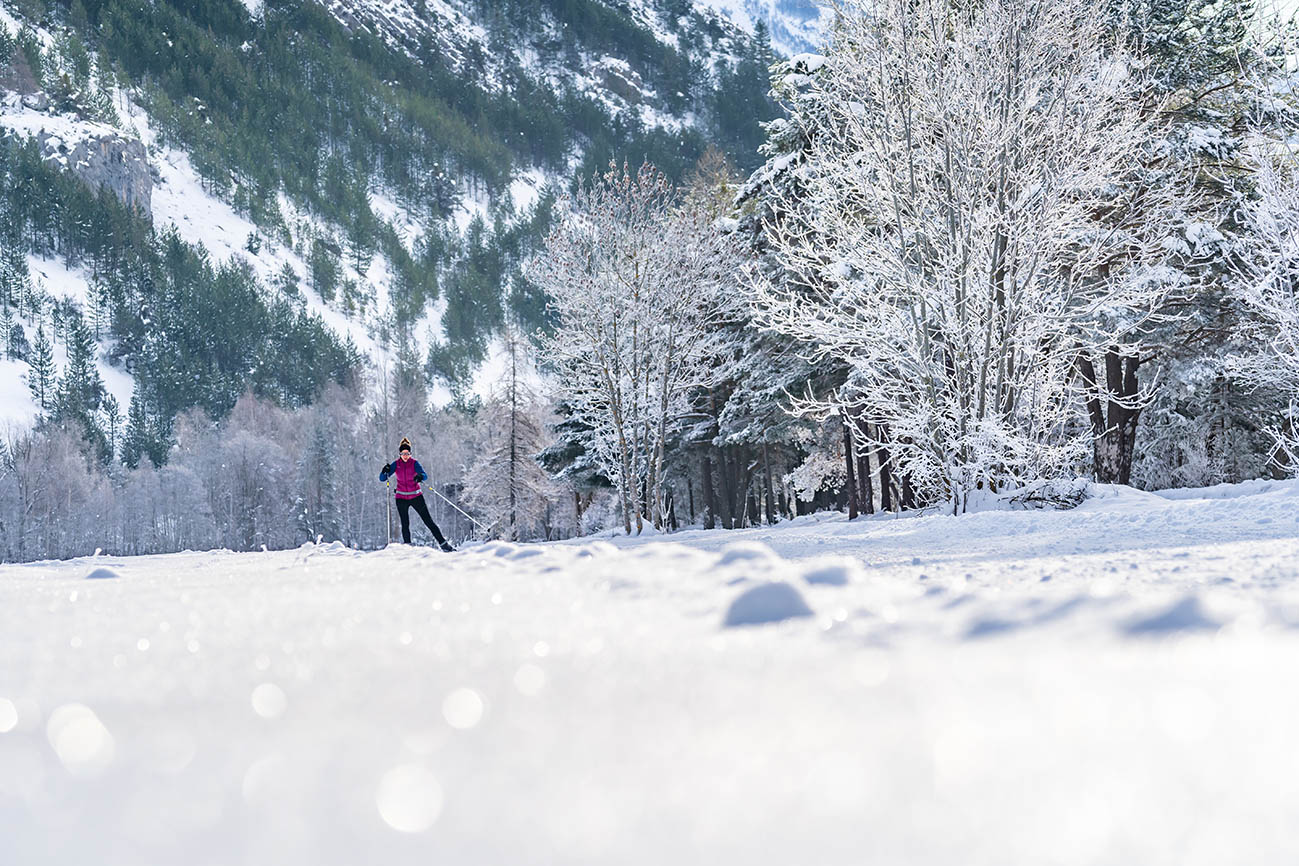
Track No. 3: The Plain
Description
An easy and pleasant way to enjoy the sunshine of the Vallouise plain, on your own or with your family!
This loop takes you right through the heart of the Vallouise plain, not far from the heart of Vallouise village. Ideal in the morning, the circuit is in the sun from the very first hours of the day.
The circuit is available in skating or classic technique.
1. Once you've arrived at the Chalet Nordique with your Pass in your pocket, set off to discover the practice on circuit n°3 La Plaine.
2. After crossing the bridge to reach the left bank of the Onde, the circuit skirts the river, until forking off 500 meters further to the right for a loop that takes you back to the starting point.
- Towns crossed : Vallouise-Pelvoux
Recommandations
→ Cross-country ski trails are groomed, marked and safe. Access is subject to a charge and reserved for Nordic skiers.
→ You use these trails under your own responsibility: find out about weather conditions and trail closures, and don't overestimate your possibilities.
→ Respect the signs: trail directions, dangers, prohibitions, avalanche closures, etc.
→ Dogs are forbidden on cross-country ski trails.
→ Night-time activities and biathlon shooting in the Nordic area must be supervised by a professional.
→ Skiing outside opening hours is dangerous and prohibited (presence of grooming equipment).
→ Take your garbage with you
Tours are available in skating or classic technique.
Winter conditions are very pleasant all day long. However, from March onwards, it's best to practice in the morning, as some of the trails are quickly exposed to the sun.
Don't hesitate to ask for a piste map at the Chalet Nordique in Vallouise or at the Pelvoux lift information point!
Please note: This information is for guidance only. It is your responsibility to check the weather report and conditions before you set off. The Tourist Office and Écrins National Park cannot be held responsible in the event of an accident. In case of doubt, contact professionals: instructors or equipment hire companies.
Emergency contact details: Secours Montagne: 04 92 22 22 22 or 112
11 points of interest
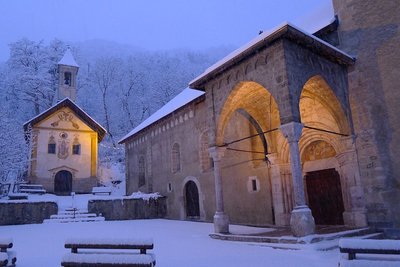
L'église Saint Etienne (à droite) et la chapelle des pénitents (à gauche) - Thierry Maillet - PNE  Architecture
ArchitectureSaint-Étienne de Vallouise Church
Listed and protected as an historic monument since 22 October 1913, the church dedicated to Saint Stephen is one of the most beautiful religious edifices in Hautes-Alpes. It is typical of the Romanesque churches in the Briançon region built in the second half of the 15th century, although its exact construction date is still uncertain.
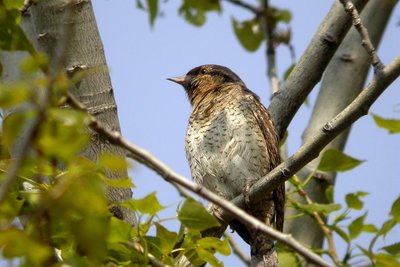
Torcol fourmilier - Damien Combrisson - Parc national des Écrins  Fauna
FaunaThe northern wryneck
The old trees in the orchard are home to the northern wryneck. It has a loud song, rather like that of the green woodpecker, only slower. This bird owes its name to the extreme way it extends and twists its neck when it feels threatened. Its French name torcol fourmilier is a reference to the fact that it feeds on ants (fourmils in French). Difficult to spot because its plumage merges into the colour of the tree trunks, it gives its presence away by its song when it returns from its migration.
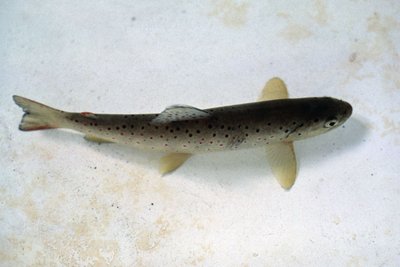
La truite fario - Parc national des Écrins  Fauna
FaunaThe trout
But what's the angler angling for? The brown trout of course! This is the mountain fish par excellence, with a streamlined body to withstand the current more efficiently and light brown skin speckled with black and red. It lives in cold, oxygen-rich waters.
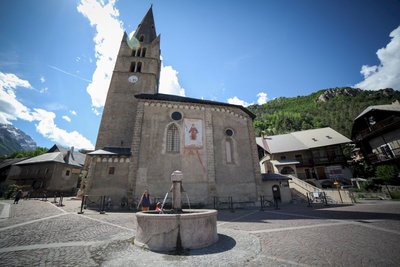
Place de l'Église - Thibaut Blais  History
HistoryThe church in Vallouise
The church of Saint-Étienne dates from the fifteenth and sixteenth centuries. Inside is an altarpiece and a tabernacle in gilded wood dating from the eighteenth century, together with come mural paintings. Not far from the church stands the late sixteenth-century Chapel of the Penitents with a nineteenth-century painted facade.
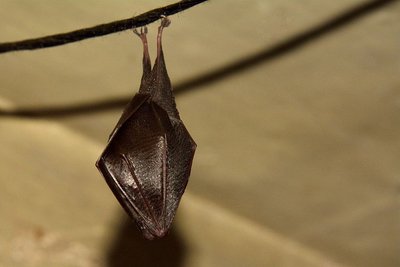
Petit rhinolophe enveloppé dans ses ailes - Mireille Coulon - Parc national des Écrins  Fauna
FaunaThe lesser horseshoe bat
In summer, bats take up residence in the church roof. The species living here is the lesser horseshoe bat, which has been in serious decline over recent decades. Every year, the mothers return after hibernating in caves and each one gives birth to one bat pup. Bats are insectivore mammals threatened by the insecticides used on farmland and on wooden structures and the loss of their hunting habitats and roosts, among other things. They are all protected.
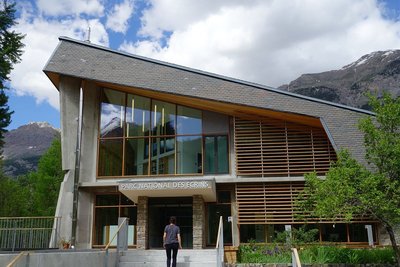
La Maison du Parc de Vallouise - Thierry Maillet - Parc national des Écrins  History
HistoryThe Vallouise Park Centre
Vallouise Pelvoux is a municipality within the Parc National des Écrins. Renovated in 2014, the Park Centre ("Maison du Parc") houses the offices of the local Park staff and has a spacious visitor reception area. It offers a permanent interactive exhibition inviting discovery of the territory and its heritage features, a temporary exhibition space on the upper floor and an audiovisual room (screenings and talks). It is currently in the process of applying for the "Tourisme et Handicap" tourism and disability label. Admission is free and so, too, are most of the activities in offer.
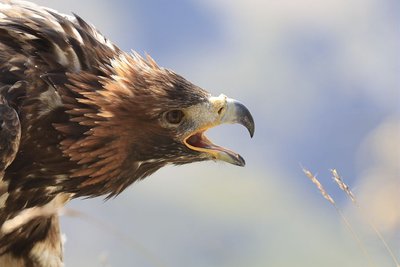
Aigle royal - Cyril Coursier - Parc national des Écrins  Fauna
FaunaThe sun bird
So what is the identity of this sun bird? It's the royal, or golden, eagle of course. Although it is telling the time here, in the surrounding natural landscape it hunts marmots. But what becomes of it in winter when the marmots hibernate deep in their burrows? It's a lean time. It has to make do with a hare or ptarmigan, and in particular the carcasses of chamois which have not survived the winter or have been killed in an avalanche.
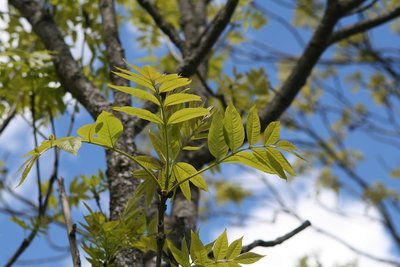
Un frêne - Marie-Geneviève Nicolas - Parc national des Écrins  Flora
FloraThe ash tree
Even in winter, the ash can be recognised from its large black leaf buds. The leaves are compound. A pioneer species that grows easily, the ash has long been used by man for everyday needs: its foliage was used to feed cattle and its hard, flexible wood was used to make a variety of objects such as tool handles. Its French name frêne often appears in local place names too: Freissinières (frêne noir - black ash), Le Freney etc. Evidence of its historical importance to human communities..
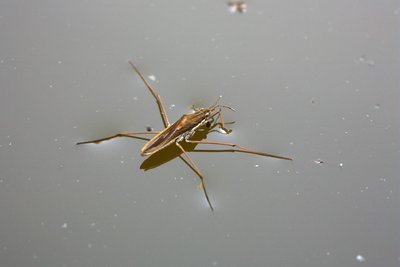
Un gerris - Bernard Nicollet - Parc national des Écrins  Fauna
FaunaThe gerris
Some strange creatures are moving jerkily over the surface of the water: Gerrises, insects related to bedbugs. Like a true insect, they have six legs and they «skate» across the water using their intermediate and hind legs which are covered in hairs to make them water-resistant. They are carnivorous and anything on the water surface, dead or alive, is good to eat! They catch their prey with the forelegs, sucking up the juices with their strong proboscis!
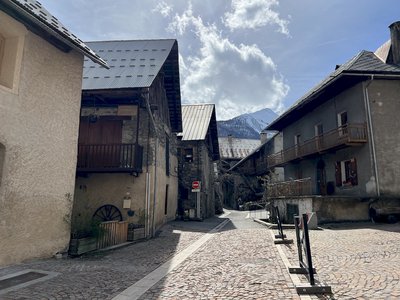
Rue de Champ de Ville - Pierre Nossereau  Architecture
ArchitectureVallouise
Multi-storey houses - typical of the architecture in the valley in the seventeenth and eighteenth centuries - stand on the old village street. The ground floor was reserved for animals, the first floor for habitation and the upper floors for grain storage. People moved from one floor to another by means of balconies interconnected by a staircase. Many of these balconies are arcaded with stone columns. This type of arcaded balcony is found throughout the valley.
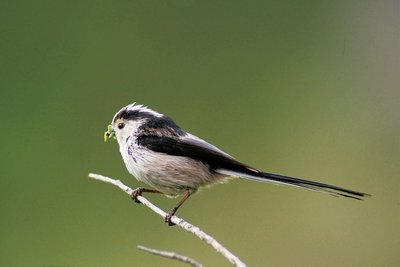
La mésange à longue queue - Robert Chevalier - Parc national des Écrins  Fauna
FaunaThe long-tailed tit
Some birds are causing a stir in a tree, constantly coming and going and uttering little calls. They are round and black and pinkish beige in colour with a long tails, hence their name, the long-tailed tit. They are resident birds and always live in small groups. They inhabit forests, undergrowth and even gardens. They weave a ball-shaped nest out of lichen, moss and dry grass.
